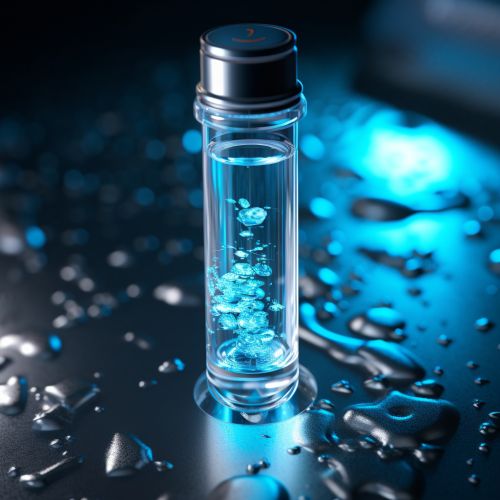The Physics of Magnetic Resonance Imaging (MRI) Contrast Agents
Introduction
Magnetic Resonance Imaging (MRI) is a non-invasive imaging technology that produces three dimensional detailed anatomical images. It is often used for disease detection, diagnosis, and treatment monitoring. It is based on sophisticated technology that excites and detects the change in direction of the rotational axis of protons found in the water that makes up living tissues. Contrast agents are often used in MRI scans to enhance the visibility of certain tissues or blood vessels.


Physics of MRI
MRI is a medical imaging technique used in radiology to visualize detailed internal structures. It uses a strong magnetic field and radio waves to generate images of the organs in the body. The patient is placed inside a large cylinder-shaped magnet, creating a strong magnetic field around the patient. The magnetic field aligns the protons in the body, and a radio frequency current is then briefly turned on, causing the protons to alter their alignment relative to the field. When the field is turned off, the protons return to their normal alignment, and in doing so, they emit signals that can be detected and used to create an image of the body.
MRI Contrast Agents
MRI contrast agents are a group of pharmaceuticals that have become essential in MRI as they increase the sensitivity and specificity of the images. They work by altering the magnetic properties of nearby water protons, which enhances the quality of the MRI images. The most commonly used compounds for contrast enhancement are based on the metal gadolinium. These gadolinium-based contrast agents (GBCAs) are usually chelated, meaning they are bound to a chelating agent that helps to prevent the gadolinium from depositing in the body.
Types of MRI Contrast Agents
There are several types of MRI contrast agents. The most commonly used are gadolinium-based agents, but there are also iron oxide and manganese-based agents. Each type of contrast agent has its own properties and uses.
Gadolinium-Based Contrast Agents
Gadolinium-based contrast agents (GBCAs) are the most commonly used type of MRI contrast agent. Gadolinium is a rare earth metal that has seven unpaired electrons, making it highly paramagnetic. This means that it has a strong effect on the relaxation rates of nearby protons, making it an excellent contrast agent. The gadolinium ion is toxic, so it is bound to a chelating agent to prevent toxicity. There are several different types of GBCAs, each with their own properties and uses.
Iron Oxide-Based Contrast Agents
Iron oxide-based contrast agents (IOBAs) are another type of MRI contrast agent. They are made up of tiny particles of iron oxide, which is highly paramagnetic. This means that they can affect the relaxation rates of nearby protons, enhancing the contrast in MRI images. IOBAs are often used for liver imaging, as they are taken up by the liver's Kupffer cells.
Manganese-Based Contrast Agents
Manganese-based contrast agents (MnBAs) are a newer type of MRI contrast agent. Manganese is a paramagnetic metal that can affect the relaxation rates of nearby protons. MnBAs are often used for imaging the heart, as manganese is taken up by myocardial cells.
Safety of MRI Contrast Agents
The safety of MRI contrast agents is a significant concern. Most MRI contrast agents are considered safe for use in most patients, but there are some risks associated with their use. The most significant risk is nephrogenic systemic fibrosis (NSF), a rare but serious condition that can occur in patients with severe kidney disease who are given gadolinium-based contrast agents. Other risks include allergic reactions and side effects related to the injection of the contrast agent.
Conclusion
MRI contrast agents are an essential tool in the field of radiology, enhancing the visibility of certain tissues and blood vessels in MRI scans. While they are generally safe for use in most patients, there are some risks associated with their use, particularly in patients with severe kidney disease. As our understanding of these agents continues to grow, it is hoped that new and safer contrast agents can be developed.
